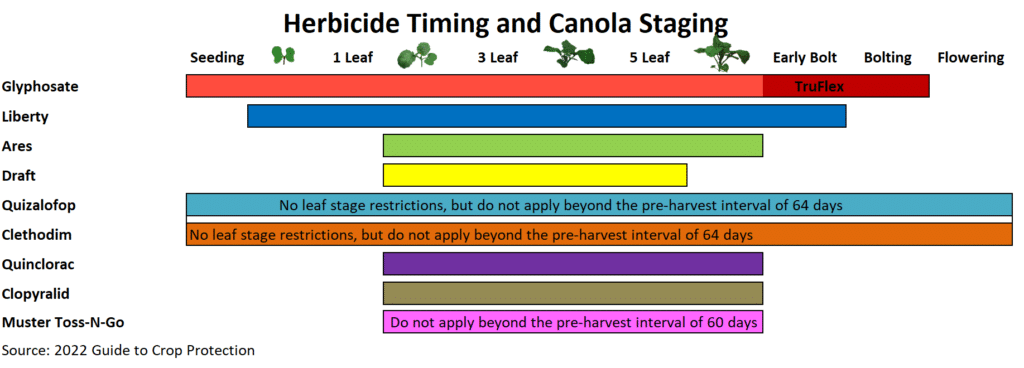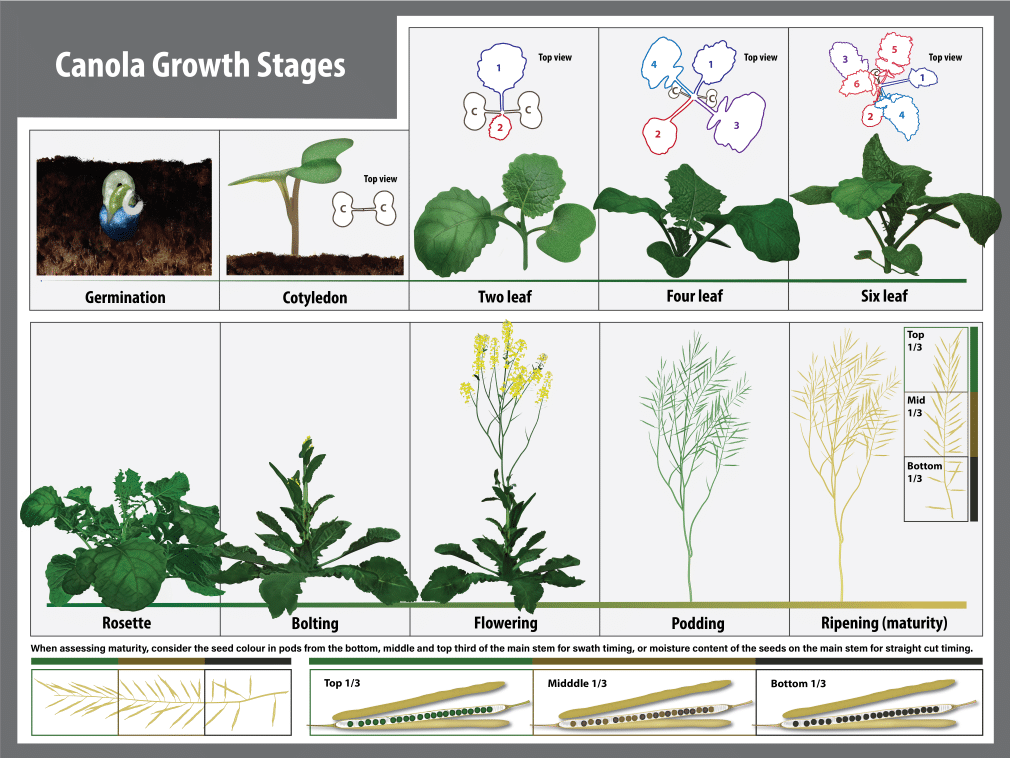Wind and rain can push back herbicide spraying to the point where weed pressure will start to reduce yields. While some yield loss may be permanent, late-window sprays can still make a big difference when compared to doing nothing. Late control can stop the yield loss, stop weeds from contributing substantially to the weed seed bank, and improve crop harvestability.
With any later applications, always follow labels for rate, timing and pre-harvest intervals (PHI). Applications made after the label window can lead to reduced weed control due to advanced weed staging and reduced herbicide contact with the weeds through the increased canola canopy closure. Late applications can also cause canola buds to abort, increasing the potential for permanent yield loss. Finally, late applications and higher than recommended rates of registered herbicides can increase the risk of elevated residues in the marketable grain. Foreign buyers are testing for pesticide residues that exceed registered maximum residue limits (MRLs) or are not registered for use on that crop. Read more tips from Keep it Clean on following the label to avoid unacceptable residues.
The Canola Encyclopedia has more on herbicide timing, including this table, which shows the window of application for various canola herbicides and systems.
What happens if you spray past this window?
Going off label is generally a bad idea for crop safety (which can reduce yields) and for potential pesticide residues in harvested seed.
Glyphosate on Roundup Ready: Canola has to metabolize the herbicide so it doesn’t damage the plant. At bud stages and after, the plant is pumping all its energy into the floral region, which means glyphosate will translocate there as well. Either the plant can’t metabolize glyphosate in these regions fast enough to stop it from harming yield, or the two genes that metabolize glyphosate are not strongly expressed at these stages. For whichever reason, the yield loss can start at a few bushels per acre and kick in fairly soon after the window closes.
Liberty on Liberty Link: Canola plants that receive an application of glufosinate after the six leaf stage could be shorter because more energy is required to metabolize the herbicide. Reductions in yield can also occur because of the energy trade off of metabolizing a late application and, potentially, because of lower expression of an enzyme responsible for metabolizing glufosinate in the floral regions.
Imazamox (one active in Ares SN) on Clearfield: A Western Canada study by Tozzi et al, IMI-resistant canola did not show significant yield loss when imazamox was applied late. Unlike the other two herbicide systems, IMI-resistant canola possesses sufficient gene expression in the floral regions to allow rapid metabolism of a late application. Corteva says the same is true for imazapyr (the other active in Ares). Despite the lack of yield loss for a late application, early applications are recommended to avoid massive losses from weed competition. With the Clearfield system, the partner herbicide can only be applied once per season.
If considering a late application because of severe weed competition, please contact your seed rep. Consider potential residues as well as crop safety. Pre-harvest intervals are 60 days for Liberty. Use the tool at spraytoswath.ca and read more at keepingitclean.ca.


